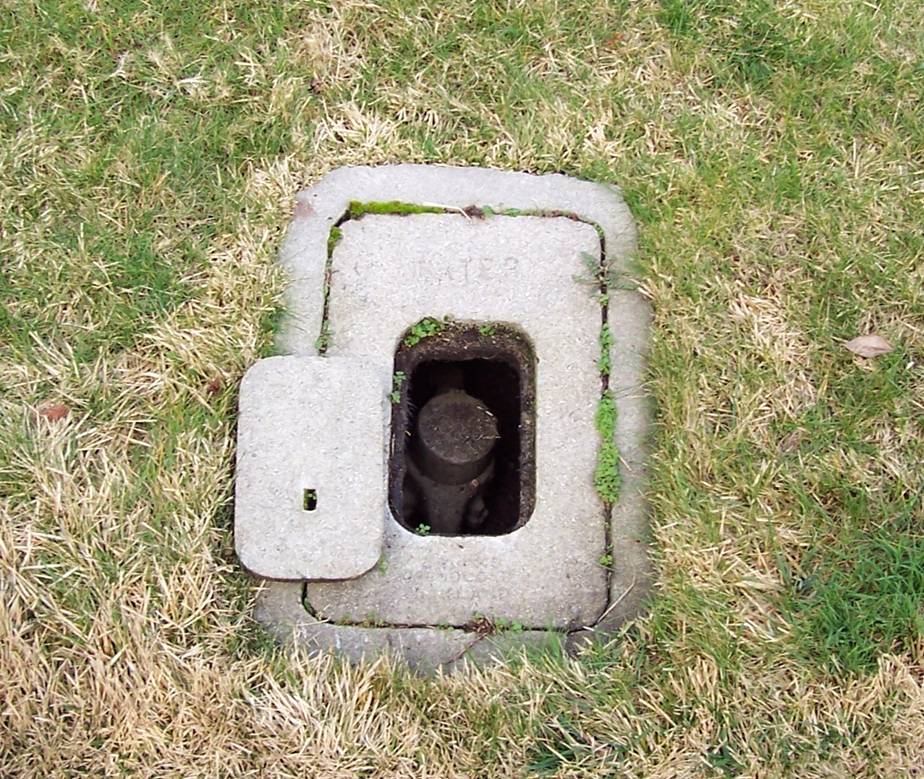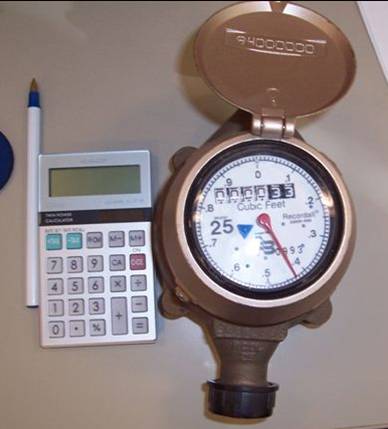Mountain View, CA
Home MenuHow to Read a Water Meter and Check for Leaks
Do you have a leak? The vast majority of abnormally high water bills are caused by irrigation scheduling, irrigation leaks, and toilet leaks. View the online step-by-step leak check guide for instructions on how to check for leaks on your property. You can also request a "Do-It-Yourself" leak detection kit by mail by calling 408-630-2554 or by completing an online request form.
 Where Is My Water Meter?
Where Is My Water Meter?
- A typical residential or commercial water meter is located near the curb or sidewalk in a concrete “box” of about 15 inches by 20 inches.
- The meter may be in the lawn or planter area.
- Use a screwdriver or other small tool to lift the lid of the “box” and access your water meter.
What Does a Water Meter Look Like?
There are a few different models of water meters, but in general they will look like the photo above. Note that many businesses may have one water meter for drinking water and one for irrigation.
 How to Read My Water Meter
How to Read My Water Meter
- The meter can be read by flipping open the metal (or plastic) lid to the meter display.
- Most water meters record water usage in cubic feet. One cubic foot equals 7.48 gallons.
- There are six dials on your meter display. The four white dials on the left are the numbers that appear on your water bill; they represent your water usage in hundreds of cubic feet (or "CCF"). The two black dials on the right do not appear on your water bill, but are useful for detecting leaks.
Steps to Check for Leaks
Near or at the center of the meter display is a colored triangle or asterisk. This triangle or asterisk is sensitive to water flowing through the meter and can be used to detect leaks.
- Turn off all water-using fixtures (clothes washer, irrigation system, etc.) and make sure that no one is using water inside or outside of the house.
- Locate the leak detector triangle or asterisk on your meter display.
- Watch your leak detector triangle or asterisk for a couple minutes to see if it turns. When water is running through the meter the leak detector triangle or asterisk will turn. If no water is being used but the leak detector is turning, you have a leak.
What to Do If There Is a Leak
If you identify a leak using the three steps above, you will want to determine where your leak is located. Start by turning off the water valve to your house (typically located near a hose bib) and repeating the three leak detection steps above. If your house water valve is off and you still have a leak, then the leak is located between the house and the meter. If your house valve is off and the leak detector does not move then the leak is inside your house (i.e. your toilet or other fixture) or your irrigation system. View "how to" videos on checking for leaks in your home. Check these elements by yourself or contact us for assistance.
If you do find and fix a leak, you may be eligible for a one-time reduction in your water bill. View Instructions for applying for a water credit.





